Welcome to the Global SuperNovae Search Team’s page.
Global Supernovae Search Team (GSNST) is a sky survey project started in August 2018 to search for astronomical transients, with the team of five members working towards the scientific objective of searching and studying Young Supernovae, Tidal Disruption Events, Extragalactic Novae, CV’s, Flares, and other astronomical transients. The GSNST Sky Survey is helping the scientific community to understand the Time Domain Astronomy. We survey the sky of Northern Hemisphere and Southern Hemisphere with clear filter. The survey currently uses robotic telescopes from:-
1) The Canary Islands, Teneriffe, Spain: Slooh’s 432 mm (17″) CDK /2939 mm f/6.8 + FLI ProLine KAF-16803 9×9µm pixel size.
2) La Dehesa, Chile: Slooh’s 432 mm (17″) CDK /2939 mm f/6.8 + FLI ProLine KAF-16803 9×9 µm pixel size.
3) South-West France: 254mm (10″) /1000mm f/4.0 + Canon 1200D 4.29 µm pixels, and 305mm (12″) /1500mm f/5.0 + QHY183 2.4 µm pixels.
4)Northern British Columbia, Canada: 610mm (24 inch)/7200 mm f/12 + SBIG ST-10 6.8 µm pixels, Celestron Rowe-Ackermann Schmidt Astrograph 203mm (8 inch)/400mm f/2.0 + ZWO ASI 1600MM Pro 3.8 µm, Canon EF 400mm f/2.8L IS III + Canon 5D MIII all located at Prince George Astronomical Observatory.
5) In Buenos Aires, Argentina: 203mm (8 inch) + Sony IMX 174 5.86 μm pixels and 304mm (12 inch) + Sony ICX825 6.45 µm pixel.
6) In Benson, Arizona, USA: 406 mm (16″)/ 4064mm f/10 Advanced Coma Free Optics – + QSI 683 5.4µm pixel and STT-1603ME
7) In Quebec, Canada we use Celestron C 14 + SBIG STF-8300XME + Narrowband HA, OIII, SII filters, and V. Additional filter wheel consists of L, R, G, B, Ha, OIII, SII and an SA200 for low resolution Spectroscopy.
For High Resolution Spectroscopy we use Alpy-600 mounted with an Atik 414ex CCD.
At the same time, an Explore Scientifique 127mm (Air-Spaced Triplet Refractor APO) equipped with an SBIG ST-7 XME with Clear, V, B, R, Ic filters.
8) In Osoyoos, BC, Canada we use 0.5m folded Newtonian telescope with a Fingerlakes Dream Machine camera using the same type of TK1024 CCD sensor that was used for the original HST wide field planetary camera.
9) In Frontenac, Quebec, Orion observatory’s main telescope is a Celestron C14EDGE, installed on a CGE PRO mount, soon to be replaced with a Planewave Ascension 200HR mount. A SBIG ST-10XME camera is currently used for CCD photometry, with Astrodon Johnson-Cousins 1.25inch photometric filters. An Andor Ikon L-936 camera will replace this current camera in the very near future, for CCD observations of faint objects
A 12inch f/4 Newtonian telescope with field corrector, is used for visual observations, with a 5 inch refractor installed on it, for solar observations with proper filtering
10) In Arizona Sky Village, we have 1/2 m f/4.2 telescope.
In addition, we are working towards adding an array of six iOptron 16-Inch f/8 Ritchey Chretien Telescope in Northern British Columbia, Canada which will scan the entire Northern Hemisphere, with a better ability and resolution to detect faint transients in North. Pointing at every single target for 300 seconds, the telescopes will observes the targets down to +22.0 magnitude in clear filter.
